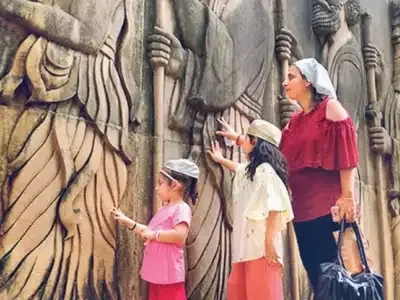
NEW DELHI: The work from home norm during Covid-hit 2020 delivered some good news for the Parsi community which saw a record 61 births, assisted through the Centre’s Jiyo Parsi scheme aimed at arresting a decline in the community’s numbers which added up to all of 57,000 in the 2011 census. Launched in 2013-14, the scheme, supported by the minority affairs ministry, has seen an additional 22 births this year with the total number of newborns now standing at 321 as of June. The gains seem small but are precious for the community that has contributed handsomely to Indian national life before and after independence.
A fast dwindling population count that stood at 1.14 lakh in 1941 prompted the Centre to launch the Jiyo Parsi scheme in 2013-14. A year-wise break-up shows that while in the first year, 16 babies were born, the number rose to 38 the next year, went down to 28 in 2016 and then rose to 58 in 2017. It dipped to 38 in 2018 but grew to 59 in 2019 and 61 in 2020.
The data regarding 321 children pertains largely to couples who benefited from medical reimbursements offered under Jiyo Parsi for medical interventions like fertility treatments, assisted reproductive technologies and counselling to seek medical help given the low birth rates in the community.
“Going by the data, 2020 saw a new high and this, in a way, can be attributed to many couples starting fertility treatment during the pandemic as work from home gave them flexibility in working hours and made visits to hospitals and clinics less stressful. One saw couples taking this opportunity — of the entire family being together at all times — as a good opportunity to decide to start a family,” said Shernaz Cama, director of Unesco Parzor and national director of Jiyo Parsi scheme.
She said the other reason for the increase in birth rates was due to changes in the Jiyo Parsi scheme in 2017. The HOC (health of the community) component took care of elderly dependants in a family and also brought in a child care scheme that helped couples with financial assistance. “In the medical category, we also included and ensured financial assistance would be extended for those who conceived through ART right up to delivery and discharge from hospital,” Cama added.
However, the pandemic brought its own share of challenges. For instance, Cama said, a woman who conceived through ART tested positive for Covid-19 during her sixth month of pregnancy and was hospitalised for a few weeks. After treatment, she was advised rest and has now delivered a healthy baby. Shahnaaz Dalal, 29, from Mumbai, spoke to TOI about her journey. She conceived in the middle of last year and was supported under the Jiyo Parsi scheme which helped her tide through the tough phase and give birth to a daughter in March. Dalal said the work from home phase clearly helped her go through her pregnancy and post-birth care with much more ease.
Cama said while the pandemic did put the brakes on offline advocacy activities, the Jiyo Parsi team went online organising seminars and holding telephonic counselling. How far advocacy has worked will show up only in the 2021 census. This will be an important milestone that will reflect any success in arresting or even slowing the decline in population. Studies conducted in the past to assess the reasons for the decline pitched a worrisome picture of there being an average of one child below the age of 10 in nine families.